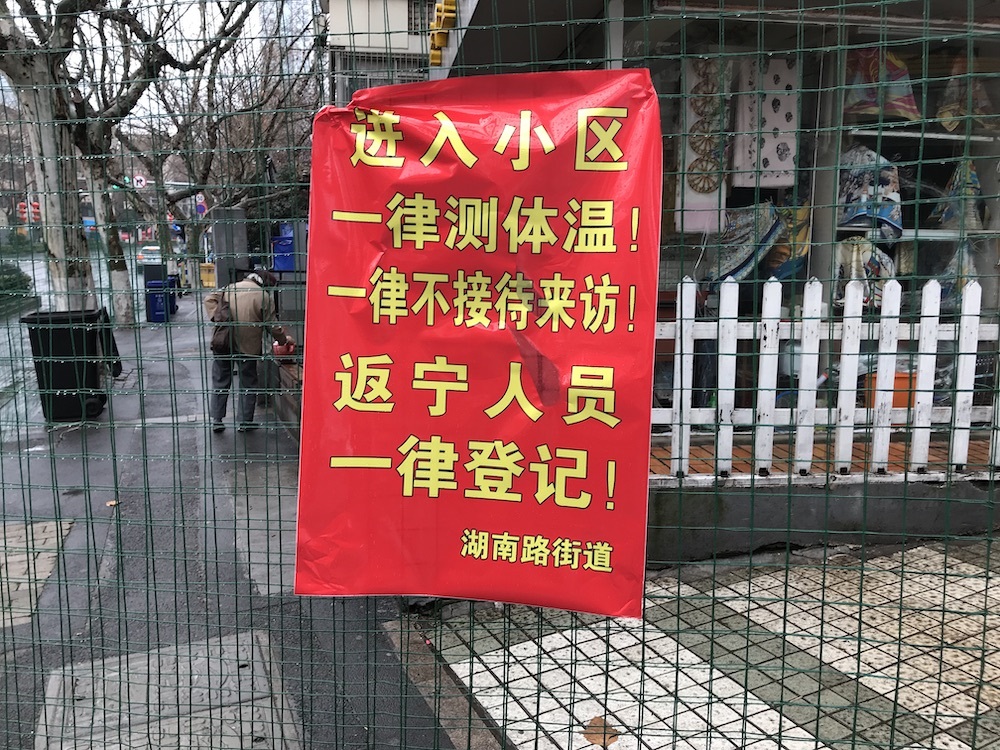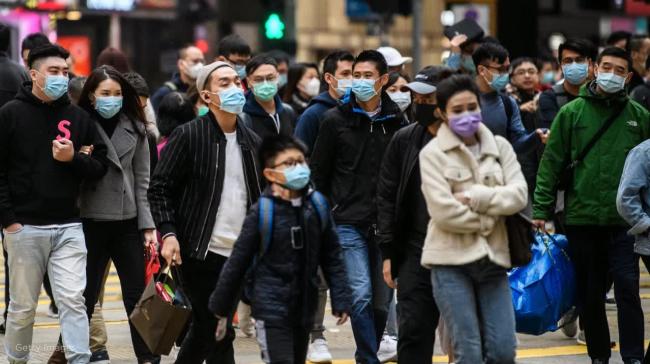Border Patrol Will Deploy Elite Tactical Agents to Sanctuary Cities
An agent with the U.S. Border Patrol Tactical Unit (BORTAC) stands guard behind the border fence between Mexico and the United States, as seen from Tijuana,Mexico November 15, 2018. REUTERS/Carlos Garcia Rawlins
The Trump administration is deploying law enforcement tactical units from the southern border as part of a supercharged arrest operation in sanctuary cities across the country, an escalation in the president’s battle against localities that refuse to participate in immigration enforcement.
The specially trained officers are being sent to cities including Chicago and New York to boost the enforcement power of local Immigration and Customs Enforcement officers, according to two officials who are familiar with the secret operation. Additional agents are expected to be sent to San Francisco; Los Angeles, Atlanta, Houston, Boston, New Orleans, Detroit and Newark, New Jersey.
The move reflects President Donald Trump’s persistence in cracking down on sanctuary cities, localities that have refused to cooperate in handing over immigrants targeted for deportation to federal authorities. It comes soon after the Justice Department and Department of Homeland Security announced a series of measures that will affect both American citizens and immigrants living in those places.
Lawrence Payne, a spokesman for Customs and Border Protection, confirmed the agency was deploying 100 officers to work with ICE, which conducts arrests in the interior of the country, “in order to enhance the integrity of the immigration system, protect public safety, and strengthen our national security.
The deployment of the teams will run from February through May, according to an email sent to CBP personnel, which was read to The New York Times by one official familiar with the planning.
Among the agents being deployed to sanctuary cities are members of the elite tactical unit known as BORTAC, which acts essentially as the SWAT team of the Border Patrol. With additional gear such as stun grenades and enhanced Special Forces-type training, including sniper certification, the officers typically conduct high-risk operations targeting individuals who are known to be violent, many of them with extensive criminal records.
The unit’s work often takes place in the most rugged and swelteringly hot areas of the border. It can involve breaking into stash houses maintained by smuggling operations that are known to be filled with drugs and weapons.
In sanctuary cities, the BORTAC agents will be asked to support interior officers in run-of-the-mill immigration arrests, the officials said. Their presence could spark new fear in immigrant communities that have been on high alert under the stepped-up deportation and detention policies adopted after Trump took office.
In a statement, ICE’s acting director, Matthew Albence, said the deployment comes in response to policies adopted by sanctuary cities, which have made it harder for immigration agents to do their jobs.
“As we have noted for years, in jurisdictions where we are not allowed to assume custody of aliens from jails, our officers are forced to make at-large arrests of criminal aliens who have been released into communities,” he said. “When sanctuary cities release these criminals back to the street, it increases the occurrence of preventable crimes, and more importantly, preventable victims.”
But Gil Kerlikowske, the former commissioner of CBP, which oversees tactical units along the border, said sending the officers to conduct immigration enforcement within cities, where they are not trained to work, could escalate situations that are already volatile. He called the move a “significant mistake.”
“If you were a police chief and you were going to make an apprehension for a relatively minor offense, you don’t send the SWAT team. And BORTAC is the SWAT team,” said Kerlikowske, who is a former chief of police in Seattle. “They’re trained for much more hazardous missions than this.”
It was a gun-wielding BORTAC agent who, in April 2000, seized Elian Gonzalez — a Cuban boy who was embroiled in an international asylum controversy — from his uncle’s arms after agents had forced their way into the home where the boy was staying.
The Border Patrol squads will be charged with backing up ICE agents during deportation operations and standing by as a show of force, the officials said.
ICE agents typically seek out people with criminal convictions or multiple immigration violations as their primary targets for deportation, but family members and friends are often swept up in the enforcement net in what are known as “collateral” arrests, and many such people could now be caught up in any enhanced operations.
ICE leadership requested the help in sanctuary jurisdictions because agents there often struggle to track down unauthorized immigrants without the help of the police and other state and local agencies.
Law enforcement officers in areas that refuse to cooperate with ICE and the Border Patrol — which include both liberal and conservative parts of the country — often argue that doing so pushes people without legal status further into the shadows, ultimately making cities less safe because that segment of the population becomes less likely to report crimes or cooperate with investigations.
The goal of the new joint operation, one of the officials said, was to increase arrests in the sanctuary jurisdictions by at least 35%.
The operation reflects an increasingly hawkish approach to immigration enforcement, following the firings and resignations of leaders who have been viewed in the White House as unwilling to take the harsh steps Trump and his advisers view as necessary to slow illegal immigration.
Other recent attempts at aggressive enforcement by ICE have faltered, such as a series of raids targeting more than 2,000 migrant families that were planned during the summer of 2019. Trump’s advance warnings on Twitter led many of those who were targeted to refuse to open their front doors, and ultimately, only 35 of those who had been targeted were arrested in the operation’s first several weeks.
Even with the added show of force from BORTAC, agents will be limited in their abilities compared to the police or sheriff’s deputies. Unlike operations on the border, where BORTAC agents may engage in armed confrontations with drug-smuggling suspects using armored vehicles, immigration agents in cities are enforcing civil infractions rather than criminal ones. They are not allowed to forcibly enter properties in order to make arrests, and the presence of BORTAC agents, while helpful in boosting the number of agents on the ground, may prove most useful for the visual message it sends.
The agents will not be busting down doors or engaging in shootouts, said one official with direct knowledge of the operation, who like the other official would not be identified because he was not authorized to discuss it.
Some CBP agents are permitted certain enforcement powers, including setting up immigration checkpoints, within 100 miles of a land or coastal port.
Naureen Shah, senior advocacy and policy counsel for the American Civil Liberties Union, questioned whether the teams would use that authority in the targeted cities, most of which are within that 100-mile zone.
“This is about further militarizing our streets,” Shah said. “It could actually have deadly effects. We could see CBP officers who aren’t trained for interior enforcement using aggressive force.”
Many ICE agents say their jobs have become increasingly difficult, three years into Trump’s presidency, because of robust campaigns by immigrant advocacy organizations seeking to safeguard unauthorized immigrants by educating them on the legal limitations that ICE officers face. As a result, in many communities where immigrants reside, people now turn immediately to their phones when ICE agents are spotted to alert neighbors that they should stay inside.
Trump campaigned on a promise to crack down on sanctuary cities. Within a few months of taking office, the Justice Department moved to withhold certain federal funds from the jurisdictions. Last week, the department filed suit against state and local governments in California, New Jersey and Washington state over sanctuary policies there. Also this month, the Department of Homeland Security announced it would ban New Yorkers from enrolling in programs that allow travelers to speed through customs checkpoints in airports and at the border as a result of the state’s decision to offer driver’s licenses to immigrants living in the country illegally and bar Homeland Security agencies from accessing the state’s motor vehicle database.
The president again highlighted the issue in his State of the Union address, arguing that sanctuary cities “release dangerous criminal aliens to prey upon the public.”
In January, a New York City Council member wrote an open letter for his fellow councilors expressing concern about increasing ICE activity in the region, including collateral arrests. Last week, an acquaintance of a man in New York who was being arrested by ICE was shot in an incident that the agency later blamed on sanctuary policies.
The aggressive immigration enforcement tactics being implemented around the country are not limited to any one agency. In a widely circulated video recorded in El Paso, Texas, on Tuesday night, Border Patrol agents are shown subduing and using a Taser to apprehend a man in a Burger King restaurant.
The video shows the man pleading repeatedly with the agents while shouting that he had done nothing wrong. A female bystander asks the agents to leave the restaurant, as she cries while witnessing the episode. While the man was writhing in pain on the floor after being stunned repeatedly, another woman in the video approached the agents and asked, “Why are you still hitting him?”
A Border Patrol spokesman said in a statement that the apprehended man was a “suspected alien smuggler,” without offering any evidence to support that assertion. The spokesman did not respond to a request for the man’s name and nationality.
“The man refused to cooperate with the verbal instructions and attempted to avoid being handcuffed, and a struggle ensued,” the Border Patrol spokesman said.
In the same statement, the spokesman said that a “citizen” had notified law enforcement of a suspicious vehicle parked on his property. The Border Patrol said the man apprehended by the agents on Tuesday was the driver of the vehicle and that “record checks indicated that the man was in the country illegally and had a positive criminal history.”
An ICE spokesman declined to comment on the specifics of the latest effort in sanctuary cities, citing the agency’s policy against sharing information about enforcement operations before they have taken place. However, the spokesman added that the agency had “made it abundantly clear for years that, in jurisdictions where we are not allowed to assume custody of aliens from jails, our officers would be redirected to make at-large arrests.”
President Donald Trump and others in his administration have repeatedly pointed to the case as a reason for toughening the country's immigration policies. Garcia-Zarate was living in the country illegally and had been deported five times before the shooting.
Trump is sending armed tactical forces to arrest immigrants in sanctuary cities
It’s yet another attempt to target sanctuary cities.
US Customs and Border Protection (CBP) agents fire
H&K P2000 handguns during a qualification test at a
shooting range on February 22, 2018, in Hidalgo,
Texas. John Moore/Getty Images
The Trump administration is reportedly sending armed and highly trained law enforcement units to sanctuary cities across the country to support US Immigration and Customs Enforcement in carrying out immigration raids.
As first reported by the New York Times, 100 US Customs and Border Protection officers, including those from the SWAT-like Border Patrol Tactical Unit, will be deployed from February through May across nine sanctuary cities: Chicago, New York, San Francisco, Los Angeles, Atlanta, Houston, Boston, New Orleans, and Newark, NJ.
Border Patrol Tactical Unit agents receive special training for high-risk law enforcement activities, including sniper certification and other advanced weapons training. Their primary charge has been tracking down drug traffickers on the US-Mexico border, where violence can often break out, but now they will also be responsible for conducting routine immigration arrests in some of America’s largest cities, according to the Times.
It’s just the latest instance in which President Donald Trump has sought to target sanctuary cities — which do not allow local law enforcement to share information with ICE or hand over immigrants in their custody — for refusing to cooperate with federal immigration authorities. Immigrants advocates say that the deployment is not only a waste of federal law enforcement resources, it also might endanger immigrant communities.
“This is transparent retaliation against local governments for refusing to do the administration’s bidding,” Naureen Shah, senior policy and advocacy counsel on immigrants’ rights for the American Civil Liberties Union, said in a statement. “It will put lives at risk by further militarizing our streets.”
Department of Homeland Security spokesperson Heather Swift said in a statement Friday that the additional CBP agents (which she emphasized come from a variety backgrounds and not just tactical units) will help overstretched ICE officers deal with the rising number of immigrants who could be arrested on immigration violations but have yet to be detained.
“ICE does not have sufficient resources to effectively manage the sustained increase in non-detained cases which is exacerbated by the rise of sanctuary jurisdictions,” she said. “These officers have also been trained in routine immigration enforcement actions, which is what they have been asked to do.”
It’s all part of Trump’s campaign against sanctuary cities
Friday’s decision is just one in a long line of Trump’s attempts to crack down on sanctuary cities. The administration has tried to withhold federal law enforcement grants from sanctuary states and vacate California’s sanctuary laws (but has mostly failed). And it recently blocked New Yorkers from enrolling in Global Entry and other programs that offer faster processing for pre-vetted travelers in response to new state sanctuary laws.
At his State of the Union address earlier this month, Trump characterized sanctuary cities as a danger to public safety and broadly painted immigrants as violent criminals, highlighting a case of an immigrant arrested on charges of murdering and sexually assaulting a 92-year-old woman in New York City.
Trump has done this over and over during his time in office, turning his ire on international criminal gangs like MS-13 and invoking the stories of “angel moms,” parents of those killed by gang members.
But in reality, research suggests that his characterization doesn’t hold water: Sanctuary policies don’t appear to make a city more dangerous. While there isn’t a huge body of research on sanctuary policies’ impact on crime rates, studies have found that they either slightly decrease crime rates or have no effect.
A study published in the journal Urban Affairs Review in 2017 found that cities with similar characteristics but for their sanctuary policies had “no statistically discernible difference” in their rates of violent crime, rape, or property crime. Using data from the National Immigration Law Center and the FBI, researchers compared crime rates before and after cities passed sanctuary laws, finding that they had no effect on crime.
Another study by the Center for American Progress, a left-leaning think tank, examined the almost 2,500 counties that don’t accept requests from US Immigration and Customs Enforcement to detain unauthorized immigrants. The study found that counties with sanctuary policies tend to have lower crime rates than those that don’t: about 35.5 fewer crimes per 10,000 people on average. The counties with the smallest populations exhibited even bigger differences in crime rates.
Many police chiefs say there’s good reason behind those results: Sanctuary policies facilitate better crime reporting and cooperation with law enforcement in criminal investigations.

New ICE crackdown in sanctuary cities sparks backlash
By Brittny Mejia, Molly Hennessy-Fiske and Leila Miller, Los Angeles Times
LOS ANGELES — Law enforcement officials are pushing back against a new federal immigration push to add more resources in sanctuary cities as the Trump administration continues to target those migrants who have entered the U.S. without legal documents.
© Irfan Khan/Los Angeles Times/TNS Federal immigration officials confirmed Friday that border agents and officers, including those in tactical units, will be deployed in Los Angeles and other so-called sanctuary cities to assist in the arrests of immigrants in the country illegally.
The relationship between ICE and many local law enforcement agencies has long been fraught. Since Trump took office, it has grown only more tenuous as police grapple with maintaining communication with ICE while also balancing transparency with community and civic leaders.
Those tensions are especially evident in California, where local law enforcement must abide by a “sanctuary” law, Senate Bill 54, which went into effect last year to provide protection for immigrants in the country illegally. In L.A., the police department stopped engaging in joint operations with ICE that directly involve civil immigration enforcement and no longer transfers people with certain minor criminal convictions to ICE custody.
In the latest flashpoint, U.S. Customs and Border Protection spokesman plans to deploy 50 Border Patrol agents and 50 field operations customs officers in nine areas, according to the agency. Specially trained officers will be sent to cities including Los Angeles, Chicago and New York.
Additional agents are expected to be sent to San Francisco, Boston, New Orleans, Detroit, Newark, N.J., and other cities, according to the agency. The deployment of the teams will run from February through May.
Q: What has been the reaction in Los Angeles?
A: Mayor Eric Garcetti and LAPD chief Michel Moore released a video Friday saying local police won’t be working with ICE.
“Regardless of your immigration status, I want every Angeleno to know your city is on your side. Here in Los Angeles, our police department does not coordinate with ICE or participate in immigration enforcement,” Garcetti said on Twitter.
“Immigration is a federal matter. Safety is a police matter. And we’re not going to mix those two,” Moore added.
L.A. County Sheriff Alex Villanueva also released a statement Friday saying, “I strongly oppose this irresponsible deployment of federal SWAT agents in Los Angeles County for civil immigration enforcement.
“This poorly thought-out plan can only be seen as a tactic to intimidate an already vulnerable population and drive them deeper into the shadows,” the statement said. “We are not any safer if an entire segment of our population is afraid to report crimes to local law enforcement.”
Q: What are federal immigration officials saying?
A. Customs and Border Patrol agents and officers being detailed to help ICE will come from different sectors and job positions, including some trained in tactical operations, according to the agency.
“ICE is utilizing CBP to supplement enforcement activity in response to the resource challenges stemming from sanctuary-city policies,” ICE Director Matthew Albence said in a statement.
Albence said in the statement that the action was being taken in response to sanctuary-city law enforcement agencies not cooperating with federal authorities by turning over immigrants being held in local jails. As a result, the statement continued, federal officers “are forced to make at-large arrests of criminal aliens who have been released into communities.”
“This effort requires a significant amount of additional time and resources,” Albence said. “When sanctuary cities release these criminals back to the street, it increases the occurrence of preventable crimes, and more importantly, preventable victims.”
The number of non-detained cases increased from 2.6 million in fiscal year 2018 to over 3.2 million in the following fiscal year, according to DHS.
“With 5,300 ERO (Enforcement and Removal Operations) law enforcement officers — some of whom were detailed to the border — ICE does not have sufficient resources to effectively manage the sustained increase in non-detained cases which is exacerbated by the rise of sanctuary jurisdictions,” the agency said in a statement.
Q: What about immigrant rights groups?
A: “This is transparent retaliation against local governments for refusing to do the administration’s bidding,” said Naureen Shah, senior policy and advocacy counsel on immigrants’ rights for the American Civil Liberties Union, said in a statement. “It will put lives at risk by further militarizing our streets. Local governments should not face reprisals for focusing on local community needs and using taxpayer money responsibly, instead of helping to deport and detain community members.”
Advocates said that rapid response networks, which provide hotlines for immigrants facing arrest by immigration officers and dispatch trained legal observers to raids, will be on high alert over the weekend.
Hamid Yazdan Panah, advocacy director of Immigrant Defense Advocates in the Bay Area, said the operation is part of a repeated pattern by the Trump administration of using fear for political gain: “Sanctuary policies are a reflection of the shared values and the fabric of that community. This escalation isn’t going to stop that.”
———
©2020 Los Angeles Times

/cdn.vox-cdn.com/uploads/chorus_image/image/66309807/1186404076.jpg.0.jpg)

/cdn.vox-cdn.com/uploads/chorus_image/image/66310807/1175129162.jpg.0.jpg)
/cdn.vox-cdn.com/uploads/chorus_image/image/66304976/1183284110.jpg.0.jpg)







/cdn.vox-cdn.com/uploads/chorus_image/image/66317056/923097572.jpg.0.jpg)


